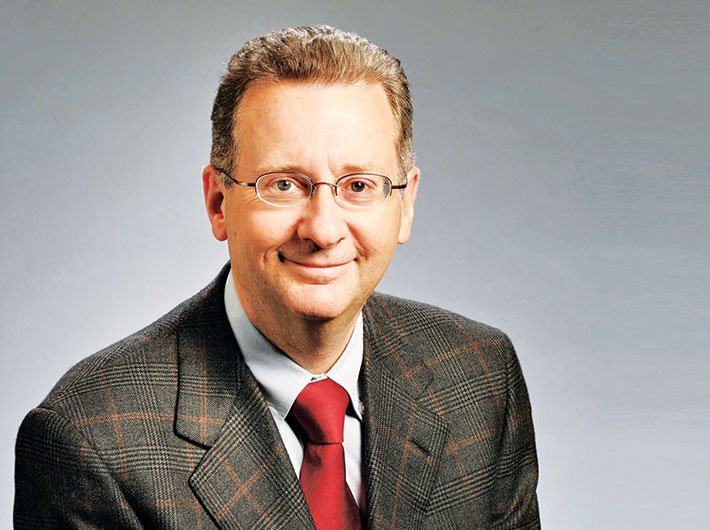Bentley Systems CEO Greg Bentley believes that convergence of geospatial and engineering technologies can help cities make infrastructure smart
With its urban population expected to reach 600 million by 2031, India is on the brink of an urban revolution, according to a United Nations (UN)-backed report. In such a scenario the country needs to increase its investment in infrastructure to ensure structured urban expansion. Here, geospatial technologies can play a major role in transforming the country. Bentley Systems CEO Greg Bentley firmly believes that convergence of geospatial and engineering technologies can help cities make their infrastructure smart. In conversation with Taru Bhatia, he talked about the scope of such technologies and how Indian infrastructure can benefit from it. Excerpts:
How do you see India’s government agencies using geospatial technologies in the next five years?
In India, there is an excellent roadways project as well as Delhi Metro. In water modeling, where India has some of the highest leakage rates in the world, some improvement has been made using our technologies. In the next five years, the country should start using more of the geospatial technologies for improving its infrastructure and in streamlining utilities. I am optimistic about it. These are areas where software can help plug a lot of gaps. We at Bentley are committed to helping the governments and agencies in India to achieve this. We intend to continue with the projects that have been started using our technologies.
So what solution does Bentley offer to make infrastructure smarter?
Geospatial was used for planning and usually didn’t reach engineers earlier. However, with the technology now becoming more mature, it provides engineers an opportunity to use it for assignments that they can continue to use during operations and maintenance of projects such as roadways, bridges and metros. The breakthrough technology that has made this possible is the drone. So, just as railways minister Suresh Prabhu had said, we will use drones to monitor construction and operations (Indian Railways recently signed an MoU with ISRO for using geospatial technologies).
We have software that is used in drone. It is used as a process by our software to take multiple overlapping pictures. This does not require any special equipment. We can have a 3D model for operation and continuous survey of projects. So you can send the drones to every maintenance and operations field, to re-survey the entire metro or railways corridor and transmission grid, every week if you like. The software, when it processes a 3D model, can help modify a design that the engineers create. Or, it can help engineers in brownfield projects. They can use the 3D models to start re-development or maintenance work of the existing infrastructure. The comparisons with the existing model can show if the construction is being done as per plan, or if anything is corroding, subsiding or is it still safe or not, and so forth. The software is particularly applicable in India where there is such a need to improve the capacity of brownfields.
What’s new in this 3D model is that besides the geospatial technology, it also includes laser scanning and point clouds. Point clouds are huge and it takes special equipment and special interpretation to use it. The geospatial technologies are now part of the work process and can continuously help in engineering and operations fields, besides the survey at the planning stage.
How would you define smart infrastructure?
The conventional definition would be that everything is connected with sensors and global positioning system. Today, we have technologies that can look into the transaction history and the library of past performances. What is missing in the potential to make a city smart or infrastructure assets smart is the engineering technology, by which decisions are made. The digital DNA that the engineers do can now be persisted into the operating lifecycle. So, instead of saying we are just getting huge data from these sensors, look how we make sense of that to make decisions. The engineering model provides the digital DNA so you can make better decisions.
How are you involved in India?
We are engaged with various government projects. Most of the time through engineering contractors but not always directly though.
Are you happy doing business in India or are there bottlenecks that worry you, particularly since the technologies that you are talking about are not easy to comprehend?
We are 350 people in India. This makes it Bentley’s second largest operation in the world after the US. I would like to say that 250 out of them are part of the Make in India initiative because their work contributes to the software that we provide globally. About doing business in India, historically it has not been the easiest place, particularly in the public sector. This is the reason we have such high hopes from the current government. We are hopeful that the policies of the present government will usher in the much needed improvements in this direction. When you ask a global business person about doing business in India, the answer could be, it is one the most difficult places in the world to do business. However, it is worthwhile doing business in India though the business conditions can be improved a lot to make the market more competitive.
Could you elaborate on that?
One faces a lot of problems while setting up a company here. Then there are the annual taxes that make it expensive. We have to employ experts to simplify things. In the past, a lot of things were left to interpretations, causing us to call in experts, who used to share their own versions on policies and laws. We are, however, starting to get relief but no one should think it is competitive yet. There is so much yet to be done.
What, in your view, should the government’s priorities?
It is my observation that whenever private investment or experience is brought in to execute a project, the partner uses best technologies to plug in the gaps immediately and achieve the best results. This ensures that such projects become models of success, and engineers who work on it become assets of India. They will then be able to become globally competitive in doing such projects elsewhere, even outside India. So this is a virtuous cycle.
The single thing the government is doing most effectively is encouraging and allowing private investment in the public sector. The rest of the world is much behind on this front. It is the only solution to the infrastructure deficit in the world. Outdated legislation and government policies are becoming hurdles. But I am excited by the innovations created in India.
taru@governancenow.com
(This interview appears in the April 1-15, 2016 issue)

